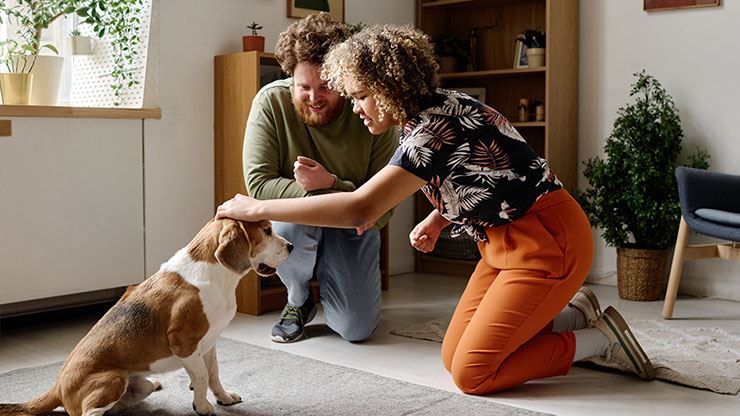
How to Introduce Your Dog to New People: Addressing Social Anxiety in Dogs
When introducing your dog to a new person, it's important to make sure your furry friend feels comfortable and safe. Some dogs may be hesitant or even aggressive toward new people. Don't worry if your dog is a bit anxious when seeing new faces - it just means you'll need to be a bit more patient and need a proven step-by-step process that has worked for many like you. The best way to make your dog act better in front of new people is by practicing positive associations when meeting new people and giving rewards whenever the dog behaves. With a little bit of effort and follow-up tips, you and your dog will be making new friends in no time!
Assessing Your Dog’s Temperament
Before introducing your dog to a new person, it’s important to assess your dog’s temperament. This will help you understand if your dog is ready to meet new people or if they need additional training to socialize better. Signs that your dog may have difficulty in being around people include excessive barking, growling, hiding, or lunging. If your dog exhibits any of these behaviors, it’s important to solve this issue before introducing them to a new person. To examine your dog’s temperament, consider their previous experiences. Have they met new people before? How did they react? If your dog has had negative experiences with new people, it may take additional time and patience to overcome this issue.

Preparing for the Introduction
Preparing your dog for the introduction is an important step to ensure a successful transition when meeting new people. Start by getting your dog used to that person’s scent. Have the person leave an item with their scent on it, such as a t-shirt, at your home before the introduction.
The Introduction
When introducing your dog to a new person, it’s important to take it slow and remain calm. Start by arranging a couple of short meetings during daily walks. This will give your dog time to get familiar with that person. Allow your dog to approach that person at their own pace. Avoid forcing any interaction if the dog is hesitant or uncomfortable. Instead, let the person offer some treats or toys to help build a positive association with your dog. During the introduction, it’s important to remain calm and relaxed. Dogs can sense our emotions, and if we are anxious or stressed, it can make the introduction more difficult. Once the dog gets the idea that this person is a friend, you can invite the concerned person to your home to spend time with your dog. This will allow your dog to become familiar with their presence and scent in a safe and familiar environment like home.
Creating a Positive Experience
Creating a positive experience for your dog is key to a successful transition when meeting new people. Start by rewarding your dog with treats or toys when they interact positively with others. This will help create a positive association between your dog and that new person. During the first few interactions, it’s important to monitor your dog’s behavior and make sure they are comfortable and relaxed. If your dog shows signs of fear or anxiety, take a step back and continue to work on the pre-introduction phase once again. Consistency is also important when creating a positive experience. Stick to a regular walking schedule and try to meet new people as often as possible so that your dog can have a better chance to socialize.

Common Issues and Solutions
During the introduction process, there may be some common issues that arise. One issue is leash pulling, which can make walks difficult and stressful for both you and the dog. To overcome leash pulling, consider using a front-clip harness or a no-pull leash. These tools can help reduce pulling and make dog walks enjoyable for everyone involved. Another issue that may arise is separation anxiety. Dogs who experience separation anxiety may become stressed or agitated when their owners leave. To address this, consider working with a trained professional who can provide additional help and support. If your dog becomes aggressive towards new people, it’s crucial to take a step back and address the issue before continuing with the introduction process. To resolve this issue, you may have to work with dog trainers or vets to overcome your dog’s aggression and help them feel normal around new people.
When to Seek Professional Help
If your dog continues to exhibit negative behaviors when meeting new people, it may be time to seek professional help. A professional dog trainer or behaviorist can provide additional support and guidance to help your dog overcome their fear or anxiety. A trained professional can also help you develop a training plan to address any negative behaviors, such as leash pulling or separation anxiety, and help both of you so that you can socialize better.
Conclusion
Introducing an anxious dog to new people can be a challenge, but with patience and persistence, success is just around the corner. Start by exploring your dog’s temperament and preparing short meetings with the person. Take it slow and create a positive experience for your dog with treats and toys. Also, remember to monitor your dog’s behavior during the first few meetings and be consistent with your goal. If issues arise, seek professional help from experts. With these tips, you can help your dog feel comfortable and safe in front of new people and ensure better social behavior.










